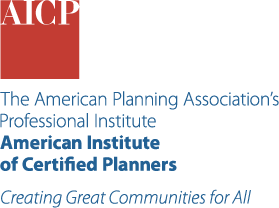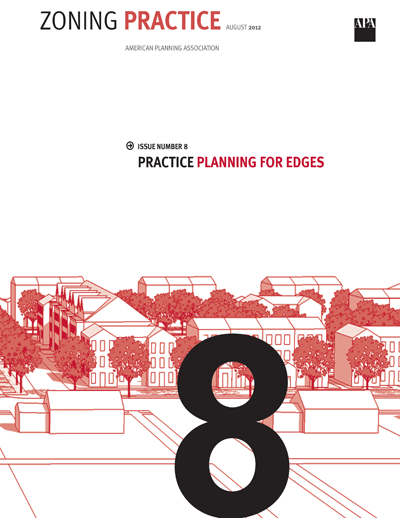Looking for education on this topic?
Check Out Our Passport Courses
Passport is your ticket to the training, experiences, and connections that will take you where you want to go in your planning career. Subscribe for unlimited access for one year to APA's extensive learning library of solution-oriented content facilitated by planners, for planners.
-
Principles for Autonomous Vehicle Policy
APA has developed a set of policy principles designed to make it easier for decision makers to integrate AVs within the fabric of their communities through planning, design, placemaking, and infrastructure investments. -
Introducing the New Tourism Economy
How communities that rely on tourism are courting new industries, highlighting cultural assets, and better supporting the people who live and work there year-round.by: Michelle McCue May 18, 2022How communities that rely on tourism are courting new industries, highlighting cultural assets, and better supporting the people who live and work there year-round. -
Biophilia
PAS QuickNotes 87by: Petra Hurtado, PhDThis edition of PAS QuickNotes emphasizes the importance of biophilia in planning and explains how planners can create communities that provide equitable access to nature and green space design that offers an effective nature experience for all.List price$10.00APA member & PAS subscriber$0.00 -
Planning for Cities of Awe
March 01, 2016Planners must look for ways to design and manage cities to maximize moments of awe. -
Driving the Smart, Just City
Smart cities aren’t just about technology; they’re about making cities work better for all residents.December 01, 2017To ensure a future that is equitable and sustainable, smart cities need planners to apply their traditional talents for creating consensus and facilitating collaboration to smart city design. -
People Behind the Plans: Seeking Justice and Showing Communities Love Through Planning
In this People Behind the Plans podcast episode, Courtney Kashima, AICP, talks with social justice planner Monique López, AICP, MCRP, about her work, her journey to urban planning, and her anti-racist, values-driven participatory planning and design firm, Pueblo Planning. -
The Future of Planning Is Agile, People-centric, and Technologically Advanced
by: Petra Hurtado, PhDPetra Hurtado, PhD, APA's Research Director, explores patterns and the agility and technological innovation planners need. -
What Is Zoning Reform and Why Do We Need It?
The case for change, why planners support it, and six zoning reform tactics that could help curb housing costs.by: Patrick Sisson January 18, 2023The case for change, why planners support it, and six zoning reform tactics that could help curb housing costs. -
California Very High Fire Hazard Severity Zones Statute
Government Code §§51175 – 51189, 1992by: State of CaliforniaThis statute by the State of California, establishes the classification of the state lands based on hazard severity levels. It aims to help stakeholders and the community in wildfire management and provides requirements for building construction and design for these communities.California -
Complete Streets
Complete streets is an approach to planning and designing streets and street networks that prioritizes safe and convenient access for all modes and users. This collection catalogs resources that provide background and policy guidance, as well as examples that demonstrate how localities are using plans, policies, and regulations to consider all modes of transportation in the design of streets. -
Worland, WY, City Code
The city's zoning code allows solar energy system owners to apply for a solar permit to protect their rights to solar access and permits solar collectors as accessory uses in all districts; subdivision regulations encourage block design that allows for solar access.Worland, WY -
Green Building
Green building encompasses a wide range of planning, design, and construction practices that seek to improve the environmental performance of buildings. This collection catalogs resources that provide background and policy guidance or demonstrate how cities and counties are using plans, regulations, and programs to require or incentivize green building practices. -
Oregon Forestland-Urban Interface Protection Act
Revised Statutes §477, 1997by: State of OregonThis statute by the State of Oregon, known as the Oregon Defensible Space Law establishes building construction and design requirements for efficient wildfire management. It aims to achieve the goal of public and private owner education and awareness about wildfire hazards.Oregon -
Racine County, WI, Code of Ordinances
Updated February 2020The county's subdivision ordinance addresses solar design, encouraging solar orientation for streets, lots, and buildings, allowing for solar access easements, and encouraging tree plantings that minimize solar access impacts. The county’s zoning code also includes floodplain development regulations that exceed the Federal Emergency Management Agency’s minimum requirements. -
The Problem (and Opportunity) of A/C
February 01, 2019The world is poised to dramatically increase its use of air conditioning. Planners must advocate for more trees, better design and placement of buildings, and other creative local cooling techniques. -
Autonomous Vehicles
Autonomous and connected vehicle technology is expected to transform the nation’s transportation system over the coming decades, with major implications for the planning and design of cities and regions. This collection catalogs resources that provide background, policy guidance, and examples of plans that address autonomous vehicles. -
Model Regulations: Alternative Energy
Sustainable Land Use Code Project, February 2013This model ordinance from the Capitol Region Council of Governments covers alternative energy sources including solar energy, offering model code provisions for small accessory rooftop systems, accessory and primary-use ground-mounted arrays, and solar design and solar-ready home requirements. -
Flood Warning
Better subdivision design for drier, safer communities.February 01, 2017APA’s Planning Advisory Service recently updated its report Subdivision Design and Flood Hazard Areas, PAS 584, with detailed information on how to keep communities safe from floods. -
Zoning and Land-Use Tools in the Wildland-Urban Interface
Zoning Practice — September 2018by: Anna Read, AICP, Molly Mowery, AICPThis issue of Zoning Practice discusses discusses a range of land-use and development regulations that affect the extent, design, and ultimate safety of development in the wildland-urban interface.List price$0.00ZP subscriber$0.00 -
Green Stormwater Infrastructure
Green stormwater infrastructure uses (or mimics) natural processes to reduce or treat stormwater runoff. This collection catalogs resources that provide background and policy or design guidance, as well as examples that demonstrate how localities are using plans, regulations, and programs to minimize dependence on gray infrastructure for stormwater management. -
Cities Are for the Birds
February 01, 2015Bird-friendly advocates have questioned the design of the new Minneapolis Vikings’ stadium, which will use immense amounts of clear glass in its design and pose a risk to birds flying in the area. -
Smart Cities: Integrating Technology, Community, and Nature
PAS Report 599by: Petra Hurtado, PhD, Benjamin Hitchings, FAICP, David Rouse, FAICP December 01, 2021If deployed in the right ways, smart city technologies can help resolve the myriad challenges all communities face today. This PAS Report prepares planners to lead the way in ensuring equitable implementation of smart city innovations that enhance livability, sustainability, and resilience while fostering innovation, collaboration, and participatory co-creation.Nonmember price$25.00APA members & PAS subscribers$0.00 -
More and Better: Increasing Diversity, Equity, and Inclusion in Planning
PAS Memo — May/June 2019Overcoming old-school institutional and structural practices used to design cities requires new approaches to urban planning with intentional approaches to seeking diversity, equity, and inclusion (DE&I). There are many ways to approach this work, but the primary — and perhaps the most critical — is within the profession. -
Enlightening Students Through the Built Environment: Active Transportation
by: Benjamin MartinezThe Built Environment Education Program (BEEP) in San Diego, led by Benjamin Martinez, educates its students on how street design and active transportation shape their communities. -
User-Centered Planning
Whether you’re designing an application form, creating a departmental web page, or implementing a digital solution, it should all start with the user.February 01, 2020A framework intended to help planning departments become more user-centered as a strategy to achieve their missions. This journey starts with — you guessed it — the user. -
Integrating Stormwater Regulation and Urban Design
Zoning Practice — November 2006by: Lisa NisensonThis issue of Zoning Practice explains new federal requirements for stormwater management and offers some words of caution about the potential unintended results of merging land-use and water regulations.List Price$10.00ZP subscriber$0.00 -
The Commissioner — June 2014
In The Commissioner's June 2014 issue: "Smart Growth’s Lasting Impact," "Managing Change with Urban Design," "Site Visits Done ... Legally," and more.List price$5.00Members & subscribers$0.00 -
The Commissioner — August 2014
In The Commissioner's August 2014 issue: "Well-Being Meets Planning," "Shaping Change with Design Guidelines," "Recusal Ethics and Your Right to Free Speech," and more.List price$5.00Members & subscribers$0.00 -
Simplify That Code!
Drawing from the new edition of his book, Rural by Design, an experienced observer of rural and small town design reports that "lighter" form-based codes and design standards are being used to great effect.June 01, 2015Planner Randall Arendt, and author of Rural by Design, argues for community adopted form-based codes to help renew depressed downtown sectors. -
The Benefits of Street-Scale Features for Walking and Biking
by: Anna Read, AICP, Lindsay BraunThis report provides background information and supportive data for planners, transportation professionals, advocates, and policy makers working to encourage community design that promotes active transportation. -
Density and the Planning Edge
Zoning Practice — August 2012by: Lisa NisensonThis issue of Zoning Practice initiates a conversation about design solutions for the planning edge, the space where new density meets the neighborhood, and it presents a framework for planning, design, and regulatory solutions.List Price$10.00ZP subscriber$0.00 -
Accounting for Flood Hazards in the Subdivision Approval Process
Zoning Practice — March 2016by: Chad Berginnis, James Schwab, FAICPThis issue of Zoning Practice highlights specific areas of concern for updating subdivision standards and review processes to improve the management of flood risk. It focuses on geographic features, layout and design, infrastructure, platting, and watershed management.List Price$0.00ZP subscriber$0.00 -
Transforming the Built Environment in Support of Aging
PAS QuickNotes 45by: Deborah Howe, FAICP August 01, 2013This edition of PAS QuickNotes describes the aging challenge, how the built environment can impact the quality of the aging experience, and offers suggestions on how to design aging friendly communities.List price$10.00APA member & PAS subscriber$0.00 -
Complete Streets
PAS QuickNotes 5The edition of PAS QuickNotes explores the concept, design consideration, and benefits of designing streets for all potential users.List price$10.00APA member & PAS subscriber$0.00 -
Incentive Zoning: Meeting Urban Design and Affordable Housing Objectives
PAS Report 494by: Marya Morris, FAICP November 01, 2000Incentive zoning isn't new, but using it to achieve the objectives of smart growth is. This PAS Report looks at successful projects, discusses legal issues, and offers principles for developing legislation.List Price$25.00APA member & PAS subscriber$0.00 -
Water-Smart Development Regulations
Zoning Practice — September 2015by: Elizabeth Garvin, AICPThis issue of Zoning Practice explores how communities can better address the use of water through local regulations. It briefly explores how water use can be influenced by pricing and then looks at the range of regulations, particularly in the areas of lot design and landscaping, available at the local level to encourage and require water conservation.List Price$10.00ZP subscriber$0.00 -
Integrating Health into the Comprehensive Plan
PAS QuickNotes 34by: David Morley, AICPThis edition of PAS QuickNotes provides a primer on opportunities each community has to address the connections between community design and public health through comprehensive plan goals and policies.List price$10.00APA member & PAS subscriber$0.00 -
Leveraging Affordable Housing Through Upzoning
Zoning Practice — April 2015by: Robert Hickey April 01, 2015This issue of Zoning Practice profiles five localities that have adopted affordable housing incentives or requirements in upzoned areas and explores how market context, zoning context, and policy design may affect the success of inclusionary upzoning policies. Each profile discusses how the policy is structured and how effective it has been to date.List Price$10.00ZP subscriber$0.00 -
Hazard Mitigation in Disaster Recovery
Planning for Post-Disaster Recovery Briefing Paper 11This Planning for Post-Disaster Recovery briefing paper outlines studies documenting that every dollar spent on mitigation correcting the past mistakes of building and planning saves society $4, on average. Studies indicate that higher design standards have a far greater payback than 4–1. -
Inclusionary Housing
PAS QuickNotes 7This edition of PAS QuickNotes provides an overview of inclusionary housing and includes discussion about types of programs, developer incentives, design strategies, control periods, and program benefits.List price$10.00APA member & PAS subscriber$0.00 -
The Use of Scenarios in Land-Use Planning
Environment and Planning B, 30(6): 885-909, 2003by: Wei-Ning Xiang, Keith ClarkeThis article examines the concepts, functions, credentials, and efficacy of land-development scenarios. -
Street Vending: A Survey of Ideas and Lessons for Planners
PAS Report 509by: Jennifer Ball August 01, 2002Some citizens and business owners criticize street vending as an unsightly activity. This PAS Report looks at issues of economic development, urban design, operations, and permitting and enforcement.List Price$25.00APA member & PAS subscriber$0.00 -
Town House Standards
Zoning Practice — February 2010by: Mary Fishman, Tom SmithThis issue of Zoning Practice takes a look at some of the regulatory and design problems that prompted Chicago to add special zoning provisions to address town house development and concludes with a short analysis of how well these provisions have stood the test of time.List Price$10.00ZP subscriber$0.00 -
Driving Growth Through Transit-Oriented Development
Zoning Practice — August 2004by: Hank Dittmar, Ellen Greenberg, FAICPThis issue of Zoning Practice defines multiple terms related to planning for TOD and discusses lessons learned from TOD design and how zoning can be effectively used as a tool in shaping successful TOD projects.List Price$10.00ZP subscriber$0.00 -
Cleveland, OH, Connecting Cleveland 2020 Citywide Plan
July 2007The city's comprehensive plan includes an arts and culture chapter that discusses the importance of creative placemaking in improving livability. -
Top 10 Misconceptions About Form-Based Codes
Public Square, May 2016by: Tony PerezThis article examines the 10 misconceptions that surround the discussion of form-based codes. -
Boston Takes on Climate Change
Among the world's most prepared but also the most vulnerable, the city is making big plans to protect itself.by: Anthony Flint April 21, 2021Planners, engineers, and others in Boston have been working for years to prepare for the inevitable impacts of climate change – a projected 40 inches of sea level rise, and the creeping storm surge and high-tide flooding that comes with it. -
The Future of Age-Friendly Communities - Research on Aging
Stein Institute for Research on Aging, November 2015by: Laurence WeinsteinThis recorded lecture defines and discusses the dual concepts of livable communities and livable homes. -
Online Collaboration Tools
March 2020This toolkit provides a large list of online collaboration tools and their description, cost, and link to the platform. -
Enhancing Strategic Planning with Massive Scenario Generation
2007by: Paul Davis, Steven Bankes, Michael EgnerThis report discusses new methods for generating a large number of scenarios for geopolitical scenario planning.






























